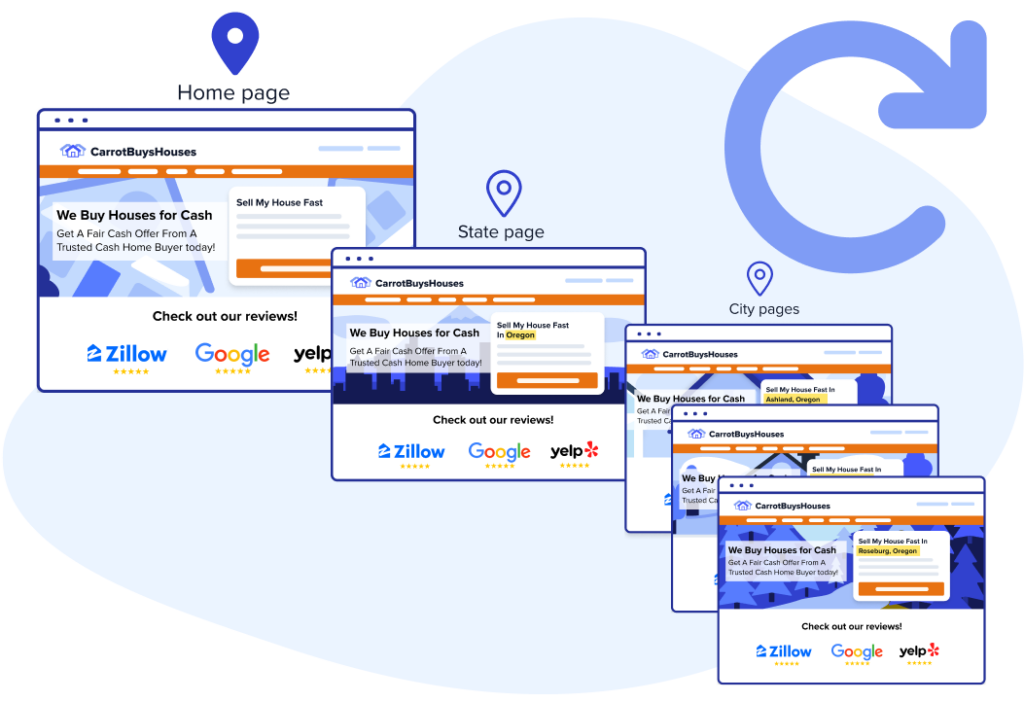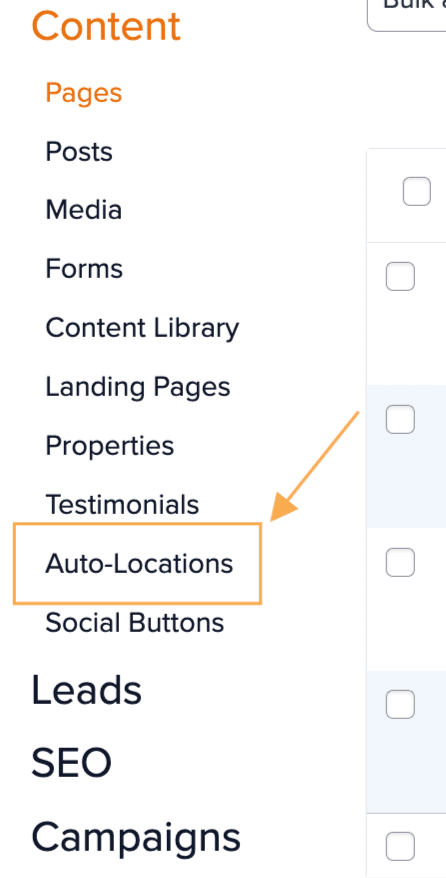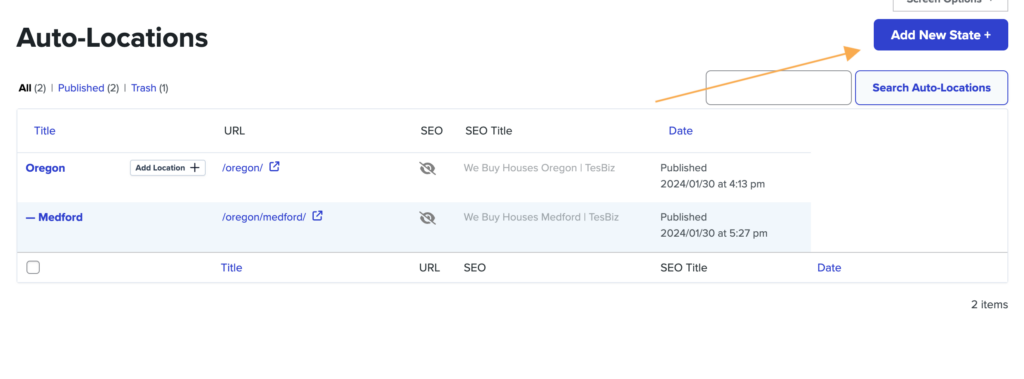How to create Auto-Location pages
An Auto-Location page is a feature that allows for pages to mirror the homepage content without having to manually update each individual page created. Use these pages to expand your site’s secondary market reach without having to worry about maintaining anything other than the content on the homepage. Before getting started, be sure to refer to the Auto-Location page checklist in the feature admin page to make sure your homepage is ready to be connected to Auto-Location pages.

Step 1: Navigate to Auto-Locations in the Content menu

From your site dashboard or account manager, click on “Content” to expose the sub-menu on the left hand side of your site navigation. Clicking on Auto-Locations will take you to an initial start screen that will guide you through the initial steps of getting started.
Step 2: Creating a state Auto-Location page
Making a state Auto-Location page helps establish the Location hierarchy for additional city Auto-Location pages you add later on–it’s also great for bringing in additional site traffic! See this tutorial for more on why we start with state page creation.
Fill out the required fields (Page Title; Location Name) before reviewing remaining fields that you may want to edit–when typing in your Location name, an autofill menu should appear. This ensures the appropriate city/state/county is set (and conveniently narrows your options for adding city or county Auto-Location pages–showing only relevant cities/counties under the specified state).
Be sure to click “Save” to finish the first Auto-Location setup!

Step 3: Add a City/County page
Once your State page is created, it’s simple to add a City or County page: click “Add Location” to the right of the State page title, and the exact same form as before will appear–only now, a City or County page will be generated.

Step 4 (optional): Add an additional State page
For some members with primary markets operating on the border between states, it may be advisable to have multiple State Auto-Location pages. Check out this tutorial on market targeting to see if your site would benefit from this approach.
If so, you’ll simply need to select the top right button to add an additional state page.

Adding Auto-Location pages can be accomplished in only a few steps, but it’s important to remember you’ll need to ensure your homepage and site are both ready before implementing. Refer to the Auto-Location pages checklist (located in the lower right hand corner of the Auto-Locations main page) prior to starting to give you the best chance of an easy, breezy Auto-Location pages launch!
